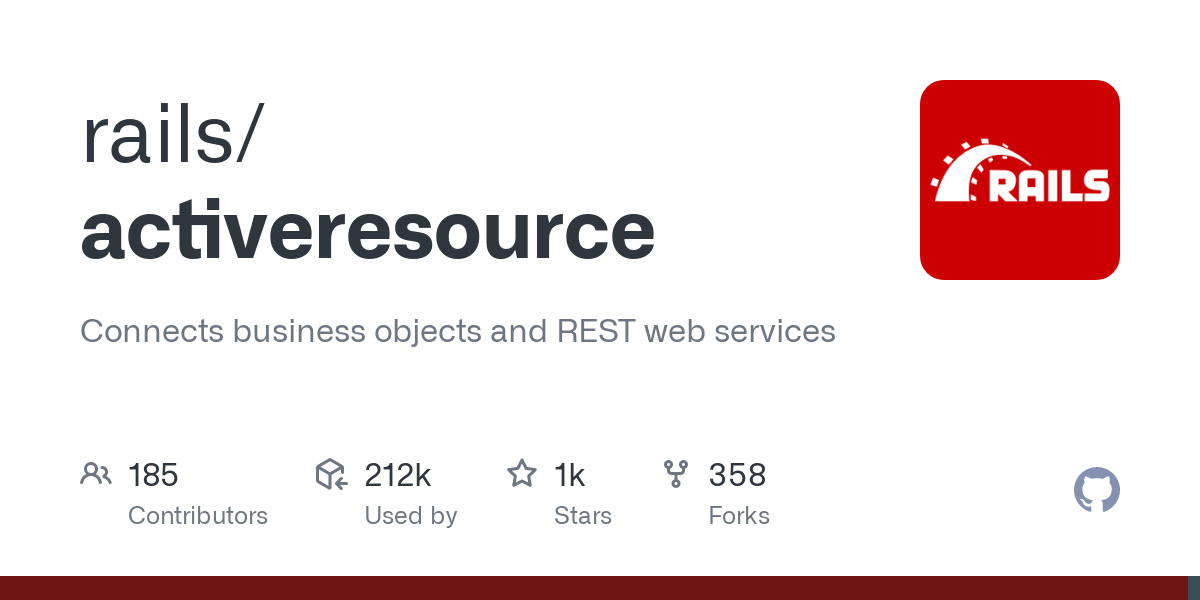Associate with ActiveResourceAssociatable

A communication of a web app with others is not a surprise, but it is the demand of mobile world’s era. Because new apps want to maintain a centralized DB which could be shared with other apps very easily and very frequently. Recently, I also worked on a similar distributed web app which provided me an idea to implement a rubygem.
ActiveResource is a ruby library which acts same as ActiveRecord, but perform operations over API. ActiveResourceAssociatable is also a ruby library which consolidates same kind of associations methods as ActiveRecord provides. However it could be achieved by own customized methods, but ActiveResourceAssociatable provides smarter way of accessing your ActiveRecord and ActiveResource methods. ActiveResourceAssociatable comes with some options too which will make you more easy to use this gem.
ActiveResourceAssociatable
This gem is used to establish the association between your ActiveResource class to ActiveRecord class. Why? Because there is no other ruby library to provide such functionality. Its simple and taking care of all options, scopes etc with your associations.
Installation
Add this line to your application’s Gemfile:
1
gem 'active_resource_associatable'
And then execute:
1
$ bundle
Or install it yourself as:
1
$ gem install active_resource_associatable
Usage
include ActiveResourceAssociatable in your ActiveRecord or ActiveResource model. Now you can easily call the methods of either of your ActiveRecord or ActiveResource models. This gem facilitates you to call ActiveResource objects in the same way as you call in any of your ActiveRecord model. It supports calls has_one_activeresource, belongs_to_activeresource, has_many_activeresources, has_and_belongs_to_many_activeresources and has_many_through_activeresources.
Has One ActiveResource
Account is non ActiveResource class which is maintaining has one relationship with ActiveRecord class User.
1
2
3
4
5
6
7
class User < ActiveResource::Base
self.site = ""
include ActiveResourceAssociatable
belongs_to_activeresource :account
end
1
2
3
4
5
class Account < ActiveRecord::Base
include ActiveResourceAssociatable
has_one_activeresource :user, class_name: 'UserResource'
end
Whereas Reader is a ActiveResource class, but maintaining has one relationship with Account.
1
2
3
4
5
6
7
class Reader < ActiveResource::Base
self.site = ""
include ActiveResourceAssociatable
has_one_activeresource :account
end
1
2
3
4
5
class Account < ActiveRecord::Base
include ActiveResourceAssociatable
belongs_to_activeresource :reader
end
Belongs To ActiveResource
The same example which explained above in Has One ActiveResource section could be an example of belongs_to_activeresource.
belongs_to_activeresource can also be applied in case of has_many_activeresources associations.
Has Many ActiveResources
User is ActiveResource class which maintains the has many relationships with non ActiveResource class Book.
1
2
3
4
5
6
7
class UserResource < ActiveResource::Base
self.site = ""
include ActiveResourceAssociatable
has_many_activeresources :books
end
1
2
3
4
5
class Book < ActiveRecord::Base
include ActiveResourceAssociatable
belongs_to_activeresource :user, class_name: 'UserResource'
end
Now you can easily call user.books which will return the array of objects of non ActiveResource class Book.
1
2
3
4
5
class Library < ActiveRecord::Base
include ActiveResourceAssociatable
has_many_activeresources :readers
end
has_many_activeresources also comes with options class_name.
1
2
3
4
5
6
7
class Reader < ActiveResource::Base
self.site = ""
include ActiveResourceAssociatable
has_many_activeresources :studying_materials, class_name: "Book"
end
1
2
3
4
5
class Book < ActiveRecord::Base
include ActiveResourceAssociatable
belongs_to_activeresource :reader
end
Now you can call reader.studying_materials which will return the array of objects of non ActiveResource class Book.
User can also call books using a specific foreign key. For Example,
1
2
3
4
5
6
7
class UserResource < ActiveResource::Base
self.site = ""
include ActiveResourceAssociatable
has_many_activeresources :books, foreign_key: "user_id"
end
Has And Belongs To Many ActiveResources
active_resource_associatable provides many to many associations between ActiveResource and ActiveRecord.
User class is a ActiveResource class and can have many images. Likewise, Image which is a ActiveRecord class can have many users.
1
2
3
4
5
6
7
class User < ActiveResource::Base
self.site = ""
include ActiveResourceAssociatable
has_and_belongs_to_many_activeresources :images
end
1
2
3
4
5
class Image < ActiveRecord::Base
include ActiveResourceAssociatable
has_and_belongs_to_many_activeresources :users
end
You can use class_name and foreign_key as in has_many_activeresources.
1
2
3
4
5
6
7
class UserResource < ActiveResource::Base
self.site = ""
include ActiveResourceAssociatable
has_and_belongs_to_many_activeresources :images, foreign_key: "user_id"
end
1
2
3
4
5
class Image < ActiveRecord::Base
include ActiveResourceAssociatable
has_and_belongs_to_many_activeresources :users, class_name: 'UserResource'
end
Has Many Through ActiveResources
has_many_through_activeresources can also be achieved using active_resource_associatable. User can have many friends through friendships. Similarly, a friend can also have many users through friendships.
1
2
3
4
5
6
7
class UserResource < ActiveResource::Base
self.site = ""
include ActiveResourceAssociatable
has_many_through_activeresources :friends, through: :friendships
end
1
2
3
4
5
6
class Friend < ActiveRecord::Base
include ActiveResourceAssociatable
has_many_through_activeresources :users, through: :friendships, class_name: 'UserResource'
end
1
2
3
4
5
6
class Friendship < ActiveRecord::Base
include ActiveResourceAssociatable
belongs_to_activeresource :user
belongs_to :friend
end
Conclusion
Every ruby or rails programmer should try this rubygem once. I believe you will really like it. Please don’t forget to share your valuable feedback.